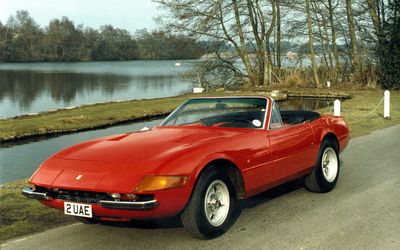








ARGENTINE TANGO
DE ADAMICH WINS TEMPORADA





ARGENTINE TANGO
The South American Temporada was, for years, an appendix at the end of the Formula 1 World Championship season, its four races in December held during summer in the southern hemisphere. The constructors were always very interested for the same reasons.

Signing drivers, the prize pool, the chance to sell cars, engines, and spare parts, especially with the season over, are all highly attractive when you need capital to build new cars for the next season. The Temporada was founded when the Automobile Club of Argentina (ACC) invited European drivers to compete in a championship, held not only in Argentina but also Chile, Uruguay and Brazil. The ACA also bought cars for young local racing talent. The first of these “migrations” to the south took place at the end of the 1947 season, a time when Argentina was ruled by General Juan Domingo Peron – a racing enthusiast and generous funder. Scuderia Ferrari participated for the first time in 1948. Over the years, in line with the political toing and froing, the Temporada was suspended, only to be reborn thanks to Juan Manuel Fangio and, almost 20 years later in 1968, thanks to the national oil company. The Temporada was based on four races for Formula 2 cars, and Scuderia Ferrari competed with two Dino 166s, driven by Ernesto “Tino” Brambilla and Andrea De Adamich. The starting line-up included 25 top-level drivers, some whom had already raced in Formula 1, including Jochen Rindt, Clay Regazzoni, Jean-Pierre Beltoise, Jo Siffert, Silvio Moser, and Pedro Rodriguez, driving for teams including Techno, Matra, Brabham, and Lotus. The Dino 166 F2 had already appeared in 1967 and competed in just a single race, with Jonathan Williams in Rouen. It was developed thanks to an agreement with Fiat to produce 500 engines for the Dino road car which carried the Fiat and Ferrari marque. The V6 engine had a capacity of 1,596 cc and delivered 200 hp.
In 1968 Ferrari competed in several races, and the European Championship and at the end of the season Brambilla securing two victories and a second place. He won at Hockenheim and then Vallelunga in Rome, a result dear to Enzo as his son Dino had worked on the engine. In these two races Brambilla also set both races’ fastest laps and took pole in Rome. De Adamich was second at Vallelunga while Derek Bell took third at Hockenheim and pole at Zandvoort – where he recorded the fastest lap in a dead heat with Brambilla. During the season, in races not valid for the European Championship, Jacky Ickx, Chris Amon, Brian Redman, Giancarlo Baghetti and Mario Casoni also drove the car. On the back of this strong overall performance, Maranello decided to send the two Italian drivers to the Temporada. Brambilla immediately won in Buenos Aires, also setting the fastest lap, ahead of his teammate. In subsequent outings the balance tipped in favour of De Adamich, who won two races: in Cordoba and San Juan, and pole in the former. The final victory was a battle between De Adamich and Rindt, since two withdrawals had knocked Brambilla back in the standings. In the last race, the driver from Monza seized pole and fastest lap, but victory went to Piers Courage in a Brabham.
However, De Adamich only needed fifth place to win the Temporada, while Brambilla was fourth in the final standings. With their results Ferrari won the Constructors title. The Dino 166 F2 was later converted into the Dino 246 Tasmania for the Tasman Cup, which it won with Amon in 1969.
